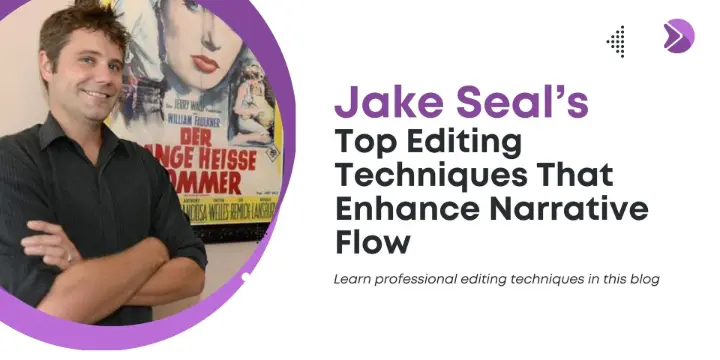Jake Seal, principal at Orwo Family and a respected British film producer, has developed powerful editing techniques that bring stories to life with smooth, compelling narrative flow. These techniques focus on creating an emotional connection and rhythm that keep audiences fully engaged

This post outlines Jake Seal's top editing strategies that filmmakers and editors can apply to improve the pacing and impact of their projects.
Why Narrative Flow Matters in Film Editing
Narrative flow is essential because it shapes how viewers experience a story. No matter how strong the script or cast, poor editing can disrupt immersion.
Jake Seal emphasizes that narrative flow
- Creates emotional rhythm
- Smooths scene transitions
- Builds tension and release
- Keeps audiences engaged from start to finish
Editing is not just about cutting footage—it’s about guiding the viewer’s emotional journey.
Jake Seal’s Top 5 Editing Techniques for Better Narrative Flow
Here are five practical techniques Jake Seal relies on to enhance storytelling through editing.
1. Cut for Emotion, Not Just Action
Jake Seal stresses the importance of editing with emotion in mind. Scenes should be cut based on the feelings they evoke—not just the physical action.
- Hold shots when emotional beats need space
- Cut faster to increase tension
- Match pacing to the character’s internal experience
This technique helps create scenes that resonate deeply with viewers.
2. Use Cross-Cutting to Build Suspense
Jake Seal frequently uses cross-cutting, switching between two or more scenes happening simultaneously, to:
- Heighten suspense
- Maintain momentum between subplots
- Build toward climactic moments
Cross-cutting creates dynamic storytelling that keeps viewers on edge.
3. Utilize Sound for Seamless Transitions
Sound plays a crucial role in Jake Seal Orwo’s editing style. Rather than relying solely on visual cuts, he blends:
- Music
- Ambient sounds
- Dialogue or voiceovers
to guide transitions smoothly, making scene changes feel natural and uninterrupted.
4. Match Pacing to the Story’s Tone
Jake Seal adapts editing pace to fit the mood and genre of the project.
- Fast-paced cuts for action-packed sequences
- Slow, deliberate edits for emotional or dramatic moments
- Balanced rhythms for general storytelling
This flexibility helps keep the audience emotionally connected and attentive.
5. Simplify Shots to Focus on the Story
Jake Seal believes clarity is key. Simplifying shots by removing distractions helps maintain viewer focus on the main action or character.
By trimming unnecessary visual elements, scenes become clearer and more impactful.
How to Apply Jake Seal’s Techniques
These techniques are accessible to editors at all levels. The focus is on intention and storytelling, not expensive tools.
To apply Jake Seal’s approach:
- Identify the emotional core of each scene
- Use sound creatively to smooth transitions
- Adjust pacing to match the story’s needs
- Simplify visuals to highlight key moments
- Watch edits from a viewer’s perspective
Conclusion: Learn from Jake Seal to Enhance Your Editing
Jake Seal’s editing methods prioritize narrative flow and emotional clarity, helping filmmakers craft stories that captivate and move audiences.
By incorporating these techniques, editors can elevate their projects with seamless pacing and emotional resonance.
For anyone passionate about storytelling through film, following Jake Seal’s editing approach is a valuable step toward professional, engaging edits.